#Best Soil For Planting Grape Vines
Text
Hello hello~
I've got some garden pic updates :)
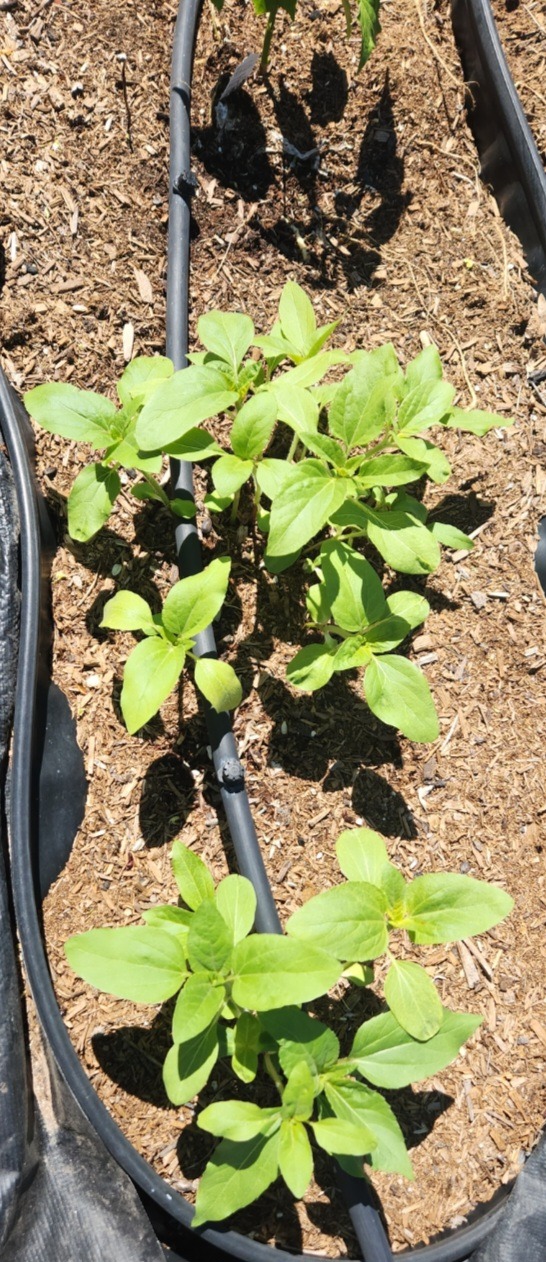
New sunflower patch, I'm only doing a small patch here as It's to tide over till I get some more scaping/zoning planned up. These are from 4th gen mix seeds (I got them from some friends and classmates)

Same row, I purchased some jalapeno starts as the peppers I seed started are still super small currently.
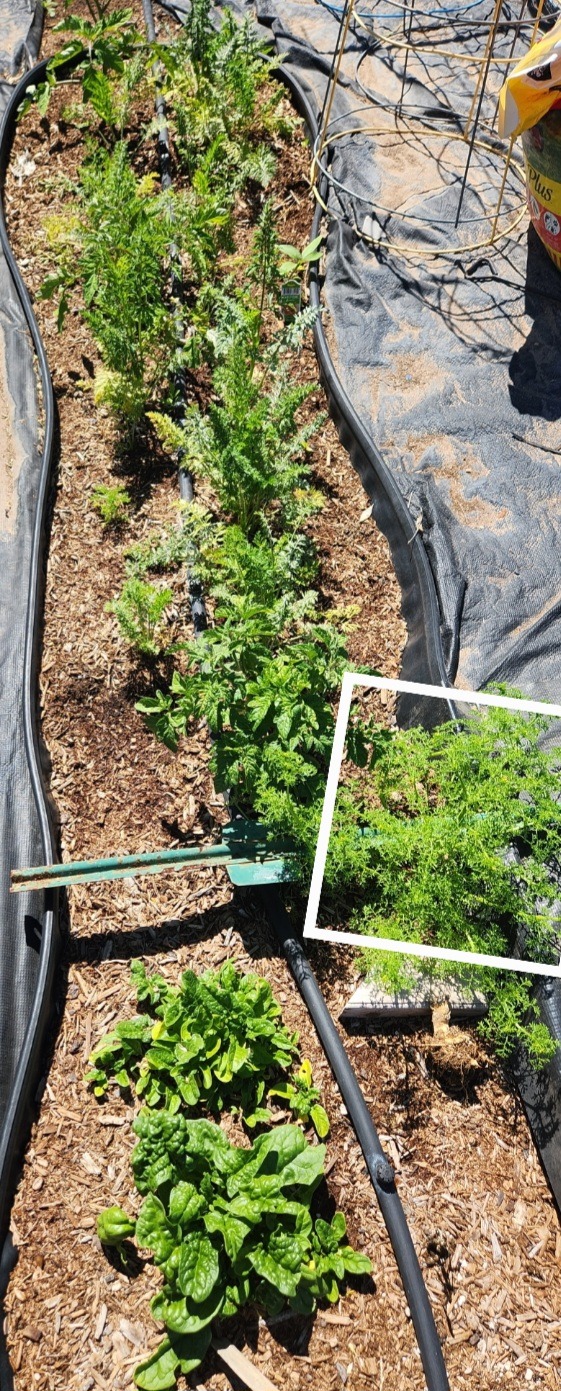
Same tows, some super late starting spinach. I'm letting it grow to see if I can see what seeding for spinach is like and share that with you all :)
In the white line/square is a wild seeded chamomile plant. I pulled it and gave it to the chickens as a treat.
Further up is the remaining carrots and some tomato starts we purchased, now interplanted with them. There's 2 slicer types and a grape variety. I don't remember offhand if they are determinate or indeterminate. Unfortunately the ones I seed started died off once they were returned outside.
:( thankfully we've all agreed to go light on tomatoes this year due to that.

In ground some direct seeded squash, these are a patty pan/Starburst variety and a couple zuchinni. With luck this year we avoid the squash bugs!
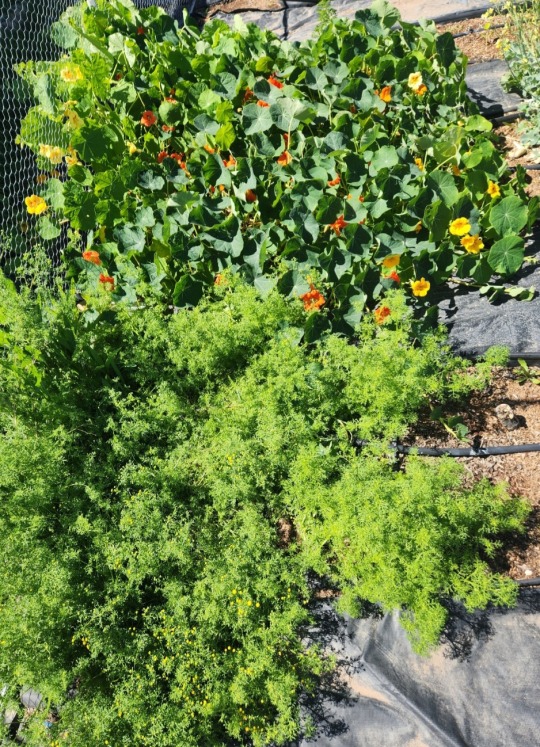
The direct seeded nasturtium in the back and front is careless wildseeded chamomile (I swear it's the best way to grow it and will be sowing another patch like this)
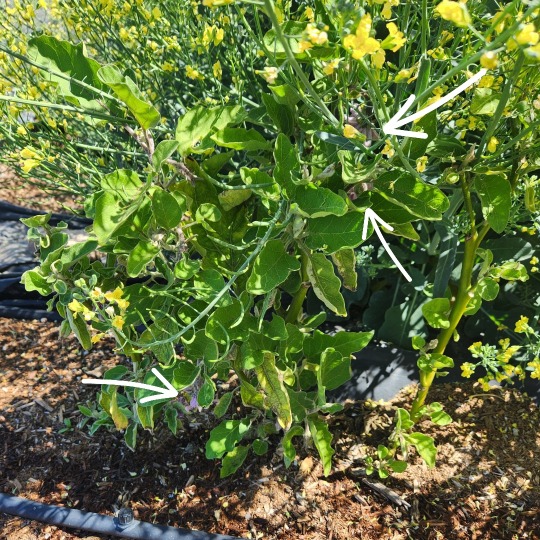
The few eggplants I've left for now have flowers, pointed to by the white arrows.
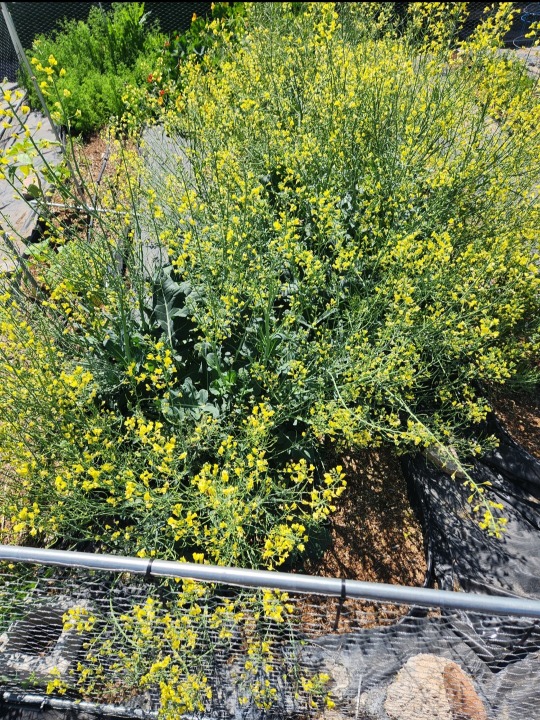
And the broccoli currently, the seeds aren't ready quite yet, but I pulled a pod the birds got to to check them, still pretty green but the seeds are of good size. Still lots of lovely flowers for the various pollinators of the area. Unlike carrot flowers, broccoli seems to attract mostly bees (the honeybees) I haven't seen too many butterflies, moths, flies or otherwise.

Just a bee enjoying some broccoli pollen~
For pest report,
So far I've seen flies and stink bugs.
No ants, aphids and thankfully no squash bugs so far.
Beneficial bug report,
I did see some ladybird gators while doing maintenence cleanup. Some small soil roachs in a few of the beds earthworms while trimming off roots to old sunflower stems.
Mixed bugs:
What I believe to be praying mantis egg cases, I don't know how old or how new they are though.
Pillbugs in some of the beds.
Our parrot visitors have stopped coming by, unfortunatly we no longer have any sunflower heads available for them. When more sunflowers come in I hope they will visit again, or perhaps even when the hollyhocks start seeding. Plenty of the smaller birds of the area still visiting though. I find the thought they might get broccoli seed and wild seed it elsewhere very funny.
This week I plan to work on getting a water line in and some more deep beds set up for growing more sweet potato vines/spuds. As well as getting some melon seeds direct seeded if I can (I may need more soil first to refill the bed).
Started some new spuds to vine for the sweet potato's and ordered some sunchoke tubers and seeds to start out some new herbs/spices and teas.
That's it for today's post and update 😊
🌱🌻Happy homesteading and Urban Farming🌻🌱
3.21.2024
#homesteading#self sufficient living#thestudentfarmer#studentfarmer#self sufficiency#food#garden#gardening#low waste#chickens#urban green spaces#urban biodiversity#urban homesteading#urban gardening#human right to clean food#right to grow food#food waste#food is a human right#herbal#garden pests#chamomile#tomato plant#broccoli grow cycle#broccoli plant#sunflowers#carrot#seed saving#plant growth#plant development#food desert
4 notes
·
View notes
Text
The early history of the Yates County grape industry
By Jonathan Monfiletto
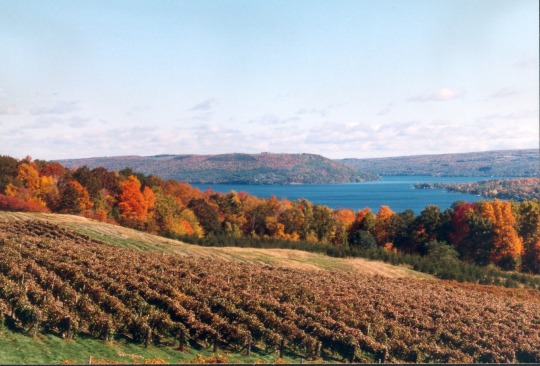
Of New York State’s 62 counties, Yates County holds the distinction of being the only one whose borders touch three of the 11 Finger Lakes – Canandaigua Lake makes up the western boundary of Yates County, while Seneca Lake makes up the eastern boundary, and Keuka Lake sits right in the middle of the county and forms part of its southern boundary. That means Yates County also hosts portions of three Finger Lakes region wine trails along the three respective lakes.
Grape growing and wine producing might seem like modern-day phenomena to the untrained eye – especially since it seems new vineyards and wineries start up in the region every year. In fact, the tradition of raising grapes and turning them into wine stretches back nearly two centuries in the Finger Lakes region as a whole and almost as long in Yates County. A 1927 article in The Chronicle-Express credits the Rev. William Bostwick, of Hammondsport, with growing the first grapes in what writer Everett Wright called the Keuka Lake District. A 1974 newspaper article dates Bostwick’s achievement as 1829 but also notes the Episcopalian minister came to the Keuka Lake shore from Connecticut with some grape root stocks that he planted in a garden behind his rectory.
“It is said that the early settlers in this county found vines growing luxuriantly in the thickets, where soil and moisture were congenial,” states a newspaper article titled “Lake Keuka Grape History.” With the perfect combination and settings of soil, moisture, and air, from Bostwick’s achievement at St. James Episcopal Church in Hammondsport arose an industry around the cultivation and harvesting of grapes.
According to Lewis Cass Aldrich in his 1892 History of Yates County, New York, J.W. Prentiss grew the first crop of grapes for wine in the Finger Lakes region, in the town of Pulteney in Steuben County – four miles south of the Yates County line – in 1836. The first vineyard planted in Yates County happened in November 1855 by W.W. Shirland on a property in Benton where the towns of Benton, Torrey, and Milo meet.
Shirland planted Isabella grapes in his first crop, but he switched to the Concord variety in 1866. “The vineyard is one of the best and most productive of the many in the county,” Aldrich wrote nearly 40 years after Shirland’s first crop. However, Aldrich calls John Mead “one of the pioneers of the business,” planting his first vineyard in 1861 also in Benton near the Torrey line. Mead’s vineyard measured three acres; Isabellas made up half an acre and Concords made up “a large proportion of the balance,” while some Catawbas were also planted. Eventually, Concords replaced the Isabellas and the Catawbas were abandoned – “The Concords are still in full vigor,” Aldrich wrote. Henry Rose, planting three acres of one of the earliest crop of Delaware grapes in 1861, was another pioneer grape grower in Benton, though his vineyard was located within the Penn Yan corporate limits. “This vineyard is still in good bearing, the original vines bearing good crops annually,” Aldrich wrote.
Aldrich describes several other early vineyards – among them Franklin Culver in Kinney’s Corners (now the hamlet of Bluff Point) in 1861 and Anson Dunlap on the Seneca Lake shore at Starkey Station in 1862; William F. VanTuyl with the first grapes on Bluff Point in 1862; and Joseph F. Crosby in Barrington in 1864, surprising his neighbors by planting a whopping six acres of grapes (though Frances Dumas’ A Good Country, A Pleasant Habitation states Shirland’s vineyard also amounted to six acres). “But few grapes were planted previous to 1865 and only in small vineyards,” Aldrich wrote. “The results warranted larger, until the valley is literally filled with good productive vineyards covering hundreds of acres. Between the years 1865 and 1870 planting was done at a rapid rate; land that had previously been counted of little value, in close proximity to the shores of the lakes, some of it steep and covered with a dense growth of young timber, being counted the best for grapes.”
Riding this post-Civil War wave was the Seneca Lake Grape and Wine Company, which bought property that included a vineyard James Valentine planted in 1862 and by 1867 extended the planting to 125 acres – “probably the largest vineyard in the State of New York,” at the time, according to Aldrich. According to Dumas, the company also formed the first winery in Yates County when in 1870 it built a large stone building to manufacture wines. “The business had already been started in another building now used for a barn,” Aldrich wrote. Several other large-scale vineyards followed suit – H.P. Sturtevant & Co. starting in 1865 at the end of Bluff Point, Pratt & Jillett beginning in 1864, and the McDowell vineyard and “many others … within a year or two succeeding,” Aldrich wrote. This included Eli R. Stever planting 25 acres of the first Iona vineyard on Bluff Point in 1867; Aldrich also notes the Gulick Brown vineyards and that of J. Warren Brown.
By 1872, more than 400 acres of grapes were planted in Jerusalem alone and 140 acres in the aptly-named Vine Valley area of Middlesex, “while J.T. Henderson, C.N. Wixom, the Seneca Lake Wine and Grape Company, together with many others, kept pace on the Seneca Lake,” according to Aldrich. However, at the same time, a surplus of grapes caused the price of the fruit to drop, and Aldrich wrote, “It looked as though enough grapes had been planted to supply all demands for a long time to come.” Many people who thought about growing grapes reconsidered; vineyard lands decreased in value. Within a few years, though, the demand for grapes – and thus the price of them – began going up again, and Yates County certainly established itself as a leader among the Finger Lakes region’s grape-growing counties. By 1892, as Aldrich noted, the county hosted 7,000 acres of vineyards with an average yearly yield of 10,000 tons.
When George C. Snow planted the first Niagara grapes in 1881 on the Esperanza Vineyards on the west branch of Keuka Lake, he shipped the fruit in what Aldrich described as “a box made of wood, holding ten pounds placed in crates holding six boxes.” Later, this became a configuration of five-pound boxes with eight boxes in a crate and then three-pound boxes with 12 in a crate. Hopkins Brothers – with their factory in Penn Yan – began the first grape box operation in Yates County, selling five-pound boxes in crates and three-pound boxes in crates. James W. Stever, in Branchport, and George W. Fenton, in Barrington, soon began manufacturing baskets that quickly replaced boxes for grapes. At first, 10-pound boxes were used to ship grapes until five-pound pony baskets became the standard. In Aldrich’s time, eight basket factories operated in Yates County with an annual output of 3 million baskets.
The growth of the grape industry in Yates County contributed toward the growth of the shipping industry. Aldrich points to three main rail companies that transported Yates County grapes: the Northern Central Railroad, which hosted its own fruit shipping business, from Canandaigua to beyond; the Barnes Fruit Line that carried grapes from Hammondsport along the Erie Railroad, and the Hollowell & Wise Fast Fruit Line that traveled over the Fall Brook Railroad. Yates County grapes were generally transported by steamboat over the lakes to the various railroad hubs.
From there, the grape and wine industry in Yates County and the Finger Lakes region continued to thrive. By the end of the 19th century, according to a 2011 article in the Finger Lakes Times, the whole region boasted more than 20,000 acres of vineyards and more than 50 wineries.
#historyblog#history#museum#archives#yatescounty#american history#us history#local history#newyork#grape#grapes#wine#agriculture#industry#business#vineyard#winery
2 notes
·
View notes
Photo

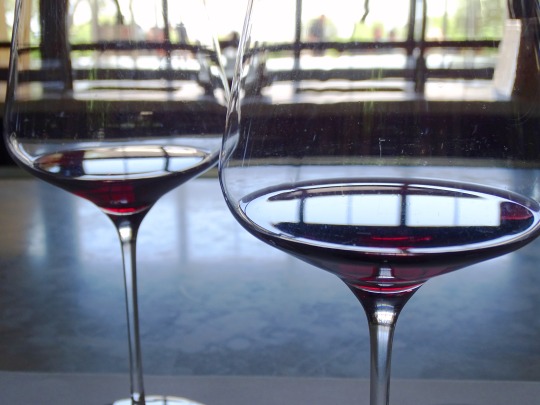
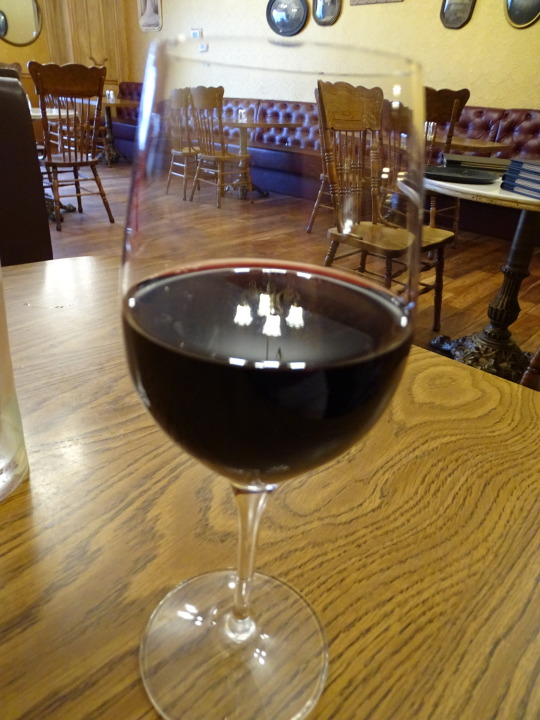


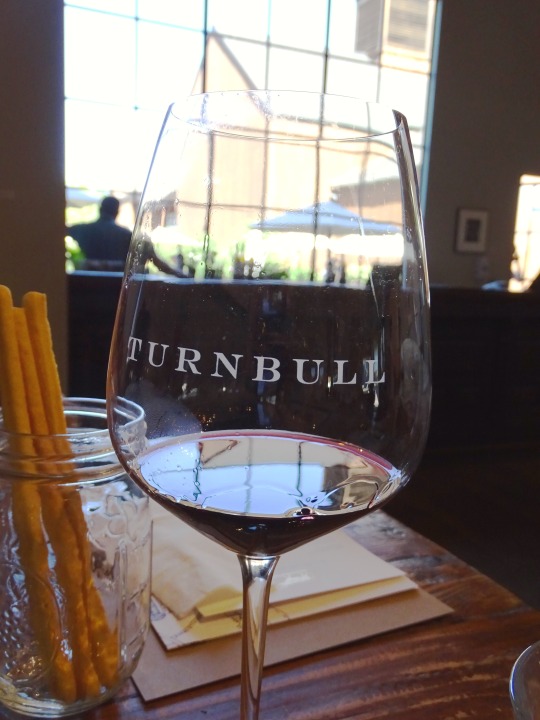

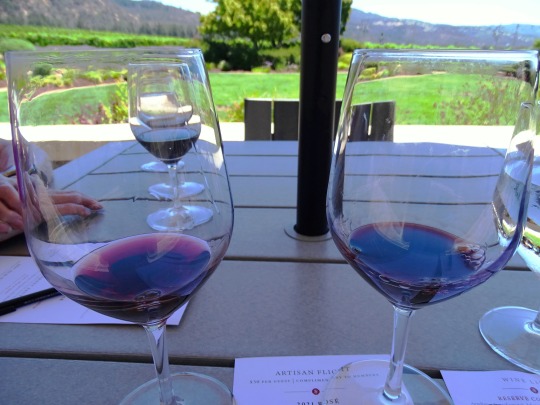


International Merlot Day
We know Merlot lovers doesn’t need a special reason to enjoy a glass of their favourite Merlot wine. But the 7th of November we are celebrating the International Day of this amazing grape, so no matter in which part of the world you are, it’s time to to raise your Merlot glass and join the celebration!
Do you know Merlot is the most planted grape in Bordeaux?
If you think about the most representative and most widely planted grape variety in Bordeaux, the majority of wine lovers would think about Cabernet Sauvignon. But that is not the case. There are far more hectares dedicated to Merlot than any other grape in Bordeaux. To give you an idea about the importance of this grape, more than 60% of all vines in Bordeaux are Merlot. In contrast, the more famous Cabernet Sauvignon occupies the second place with about 25% of all the vines. However, these grapes get along together very well. In fact, Cabernet Sauvignon and Merlot are typically blended together, though the proportion of each depends on the geographical location of the winery in the Bordeaux region.
In Bordeaux, the Gironde estuary cuts through the centre of the region creating two banks: a left bank and a right bank. It is a winery’s location on either bank that determines the proportion of the grapes in the blend. And it is the right bank of Bordeaux the one that gives more protagonism to our beloved Merlot grape. In fact, right bank blends tend to be softer, less tannic and lower in alcohol and acidity levels.
Merlot in the World
Even if experts believe this grape offers its best expression in the soils of Bordeaux, Merlot is not all about that wine region. In fact, Merlot it’s not only the most widely planted grape in Bordeaux, but all over France! Moreover, Merlot is also broadly planted in many countries around the world such as Australia, Argentina, United States, Mexico, Italy, Chile, Switzerland and numerous other countries.
Reputation of Merlot
Although, Merlot surged in fame worldwide in the late 1980s, mostly in the New World. Unfortunately, its reputation plunged, ensuring a negative consumer response to one of the most memorable lines in the 1994 wine buddy movie Sideways, “no f*cking merlot”. However, Pomerol, the most emblematical Merlot area of Bordeaux, is home of top world-famous fine wines such as Château Petrus and its neighbour Vieux Château Certan.
Interesting facts about Merlot grape:
Did you know that the word ‘Merlot’ comes ‘young blackbird’ in French? It is believed that French winemakers either gave Merlot its name because of the beautiful blue-black colour of the Merlot grape or because the blackbird likes grapes.
Merlot wine is popular worldwide because of its capacity to please all palates.
Despite its lack of tannins, Merlot ages excellently.
Blended Merlot, when aged, usually softens the tannic boldness of grapes such as Cabernet Sauvignon, mellowing out the wine.
Because of its low acidity and high sugar content, Merlot is one of the best wine for being paired with food.
Some experts believe Merlot grape is cousin of both Carmenere and Cabernet Sauvignon.
In 1990s, the Chilean wine industry sold a large amount of wine made from Carmenere grape as Merlot.
Source
Miles Raymond: No, if anyone orders Merlot, I’m leaving. I am NOT drinking any fucking Merlot!
#Louis M. Martini Winery#the best Merlot#Cline Family Cellars#Sonoma Valley#Ram's Gate Winery#Napa Valley#Pittman Cafe#Tonopah#Nevada#USA#Cabernet Sauvignon#Pino Noir#wine tasting#don't drink and drive#travel#restaurant#Brix Restaurant & Gardens#Freemark Abbey Winery#St. Francis Winery & Vineyards#Turnbull Wine Cellars#International Merlot Day#7 November#InternationalMerlotDay#HALL Wines St. Helena#California#original photography#summer 2022
2 notes
·
View notes
Text
Discover the Best Black Raisins in India: A Comprehensive Guide for the Best quality raisins in India to buy - NR Farm Product.
In the heart of India's lush countryside, where the sun kisses the fertile soil and the air is filled with the sweet scent of ripening grapes, lies the story of NR Farm – a tale of passion, tradition, and the pursuit of excellence in raisin cultivation.
Embracing Tradition, Embracing Quality
For many years, NR Farm has been associated with the best black raisins in india. Our journey began decades ago when our forefathers recognized the unique potential of India's diverse climatic regions for grape cultivation. From the sun-drenched vineyards of Maharashtra to the cool, misty hills of Karnataka, we carefully selected the perfect locations to plant our vines, ensuring optimal growing conditions for our precious grapes.
The Raisin Renaissance: Rediscovering India's Hidden Gem
Raisins may be small in size, but their impact on Indian cuisine and culture is immense. In a land where spices reign supreme and flavors dance on the palate, raisins add a touch of sweetness and complexity to both savory and sweet dishes alike.
In Indian cuisine, raisins are used in a variety of ways to add sweetness and depth of flavor to a wide range of dishes. They are often added to rice dishes like biryanis and pulao, where they provide a contrast to the savory spices and add a burst of natural sweetness. Raisins are also a common ingredient in traditional sweets and desserts like kheer, laddoos, and barfis, where they lend their chewy texture and rich flavor.
The nutritious content of raisins is one of the reasons that the best quality raisins in India to buy have become so common in Indian cooking.. They are a rich source of dietary fiber, which aids in digestion and helps regulate blood sugar levels. Raisins are also high in antioxidants, which help protect against oxidative stress and inflammation. Additionally, they contain vitamins and minerals such as potassium, iron, and vitamin C, making them a nutritious addition to any diet.
At NR Farm, we take pride in producing high-quality raisins that are grown and sun-dried in the fertile lands of India. Our raisins are made from the finest grapes, carefully selected and handpicked to ensure optimal flavor and sweetness. NR Farm is honored to contribute to the extensive tradition of the best black raisins in India via our dedication to quality and sustainability.
The Health Benefits of Raisins: Nature's Nutrient-Packed Powerhouse
Beyond their delicious taste and culinary versatility, raisins are also a nutritional powerhouse, packed with essential vitamins, minerals, and antioxidants. Here are just a few reasons why adding raisins to your diet can be a boon to your health:
Rich in Fiber: Raisins are an excellent source of dietary fiber, which promotes digestive health, regulates blood sugar levels, and helps keep you feeling full and satisfied.
Packed with Antioxidants: These tiny wonders are loaded with antioxidants like resveratrol, which may help protect against oxidative stress and inflammation, reducing the risk of chronic diseases.
Vitamin and Mineral Boost: Raisins are brimming with vitamins and minerals, including vitamin C, vitamin K, potassium, and iron, all of which are essential for maintaining overall health and well-being.
Energy-Boosting Properties: Need a quick pick-me-up? Reach for a handful of raisins! Their natural sugars provide a quick burst of energy, making them the perfect snack for busy days or intense workouts.
Beyond just being delicious, black raisins are nutrient-dense. They are abundant in fiber, antioxidants, and vital minerals like iron and potassium. Including black raisins in your diet can improve immunity, aid with digestion, and enhance general well being.Sophisticated shoppers seeking the best quality raisins in India discover N R Farm Products.
N R Farm Product leads the raisin business in quality and natural goodness, thanks to their unwavering devotion to these attributes. N R Farm Product's black raisins offer unmatched taste and quality, whether you're using them to enhance your recipes or just enjoy a healthy snack. Try the best quality raisins in India with N R Farm Products and see the difference that comes from premium grapes and expert craftsmanship.
Join Us on the Raisin Journey: From Vineyard to Table
At NR Farm, we invite you to embark on a journey with us through the sun-kissed vineyards and verdant landscapes of India's countryside. Savor the deliciousness of our premium-quality products, which are sweet and sun-dried, while you discover the riches of the best quality raisins in India.
A tale of quality, history, and a strong bond with the land is conveyed by the best quality raisins in India to buy that arrive from the vineyard to your table.
Come, join us on the raisin journey and discover the true essence of India's hidden gem. With NR Farm, every raisin is a celebration of nature's bounty and a testament to our commitment to excellence.
Visit: https://www.nrfarmproduct.com/best-quality-black-raisins-india.php
Contact: +91 8007986969

1 note
·
View note
Text
The Ultimate Guide to the McLaren Vale Wine Tour
Nestled in the picturesque landscapes of South Australia, McLaren Vale is renowned for its exquisite wine production, making it a must-visit destination for wine enthusiasts and travellers alike. This ultimate guide to the McLaren Vale Wine Tour will take you through everything you need to know about this wine lover's paradise, from the best vineyards to visit to tips on making the most of your wine-tasting adventure. So, buckle up and prepare for a journey through one of Australia’s most celebrated wine regions.

Why Choose McLaren Vale for Your Wine Tour?
Rich History and Culture
McLaren Vale boasts a rich history of winemaking that dates back to 1838 when the first vines were planted. This long heritage is reflected in the region's diverse range of wines, which have garnered international acclaim. The area is not only famous for its wine but also for its stunning natural beauty and charming small towns, making it a perfect blend of culture and nature.
Ideal Climate for Viticulture
One of the key reasons why McLaren Vale produces such outstanding wines is its Mediterranean climate. Warm, dry summers and cool, wet winters create the ideal conditions for growing a variety of grapes, particularly Shiraz, which the region is famous for. The diverse terroir, from sandy soils to ancient rocks, further enhances the uniqueness and complexity of McLaren Vale wines.
Top Vineyards to Visit on Your McLaren Vale Wine Tour
1. d’Arenberg
d’Arenberg is one of the most iconic wineries in McLaren Vale, offering a unique blend of traditional winemaking techniques and innovative practices. The winery's signature building, the d’Arenberg Cube, is an architectural marvel and a must-see on your tour. Here, you can enjoy a comprehensive tasting experience, explore the quirky art installations, and even participate in blending your own wine.
2. Wirra Wirra Vineyards
A visit to Wirra Wirra is a journey into the heart of McLaren Vale's winemaking traditions. The winery is known for its high-quality reds, particularly the Church Block blend. The picturesque grounds feature lush gardens and historic buildings, providing a perfect setting for a relaxing wine-tasting session. Don’t miss the opportunity to ring the winery's famous Angelus Bell!
3. Chapel Hill Winery
Chapel Hill Winery is celebrated for its stunning views and award-winning wines. Set in a former Methodist chapel, the winery offers a unique atmosphere that combines history with modern winemaking. Their range of wines, including the flagship McLaren Vale Shiraz, is sure to impress even the most discerning palate. The winery also offers food and wine pairings that highlight the best of local produce.
4. Coriole Vineyards
For a family-run winery with a focus on sustainability and innovation, look no further than Coriole Vineyards. The winery is renowned for its Italian varietals, such as Sangiovese and Fiano, which are a delightful change from the region's traditional offerings. The rustic cellar door and the beautiful gardens make Coriole a charming stop on your McLaren Vale wine tour.
5. Serafino Wines
Serafino Wines is another gem in McLaren Vale, known for its extensive range of wines and luxurious accommodations. The winery's picturesque lakeside setting is perfect for a leisurely afternoon of wine tasting. Be sure to try their award-winning Shiraz and indulge in the gourmet delights at the on-site restaurant.
Tips for an Unforgettable McLaren Vale Wine Tour
Plan Your Route
McLaren Vale is home to over 80 cellar doors, so planning your route in advance is essential to ensure you make the most of your time. Focus on a few key wineries to avoid rushing and allow yourself plenty of time to savour the experience at each stop.
Book in Advance
Many popular wineries require advance bookings, especially during peak seasons. Ensure you reserve your spots for tastings and tours to avoid disappointment. Some wineries also offer exclusive experiences and private tours that can enhance your visit.
Stay Hydrated and Snack Smart
Wine tasting can be dehydrating, so be sure to drink plenty of water between tastings. Carry some snacks like cheese, crackers, or nuts to cleanse your palate and keep your energy levels up throughout the day. Many wineries also offer food pairings, which can be a great way to experience the local cuisine.
Don’t Rush
Take your time to savour each wine and appreciate the unique characteristics of each vineyard. Wine tasting is as much about the experience as it is about the wine, so immerse yourself in the ambiance and enjoy the journey.
Use a Designated Driver
Safety should always be a priority. If you’re planning to indulge in multiple tastings, consider hiring a designated driver or joining a guided tour. This way, you can enjoy the wines without worrying about the drive back.
Best Time to Visit McLaren Vale
Spring (September to November)
Spring is a fantastic time to visit McLaren Vale, as the region comes alive with blossoming vines and vibrant wildflowers. The weather is mild, making it ideal for outdoor activities like vineyard tours and picnics.
Autumn (March to May)
Autumn is another great time to explore McLaren Vale, with the vineyards showcasing a stunning array of colours as the leaves change. The harvest season is in full swing, offering a unique opportunity to see winemaking in action and taste the freshest wines.
Winter (June to August)
While winter may be cooler, it’s a cosy time to visit McLaren Vale’s cellar doors, many of which offer warm, welcoming environments with roaring fireplaces. The quieter season means you can enjoy a more intimate tasting experience without the crowds.
Where to Stay During Your McLaren Vale Wine Tour
Luxury Accommodations
For those seeking a touch of luxury, there are several high-end options in McLaren Vale, including the McLaren Vale Studio Apartments and Serafino McLaren Vale. These accommodations offer modern amenities, stunning views, and easy access to top wineries.
Charming Bed and Breakfasts
If you prefer a more personal touch, the region is home to numerous charming bed and breakfasts. The Bellevue Bed & Breakfast and Amande Bed and Breakfast provide cosy rooms and a friendly atmosphere, making you feel right at home.
Unique Stays
For a unique experience, consider staying at a winery! Many vineyards, like The Vineyard McLaren Vale, offer accommodation right on their grounds, allowing you to wake up to the sight of rolling vineyards and start your day with a wine tasting.
Enjoying the Local Cuisine
No wine tour is complete without indulging in the local cuisine. McLaren Vale boasts a rich culinary scene with a focus on fresh, local produce. Be sure to visit the Willunga Farmers Market for a taste of the region's finest ingredients. Many wineries also feature on-site restaurants where you can enjoy gourmet meals paired perfectly with their wines.
Conclusion
A McLaren Vale Wine Tour is more than just a journey through vineyards; it’s an immersive experience into the heart of Australian winemaking. With its rich history, stunning landscapes, and world-class wines, McLaren Vale offers a unique and unforgettable adventure for wine lovers and travellers alike. Whether you're a seasoned oenophile or a curious novice, this guide will help you navigate the best of what McLaren Vale has to offer. So, pack your bags, grab your wine glass, and get ready to explore one of Australia's premier wine regions.For more information and to book your McLaren Vale Wine Tour, visit Paragon Wine Tours.
1 note
·
View note
Text
Do More Than Prepare the Soil!
“He plowed the land, cleared its stones, and planted it with the best vines. In the middle he built a watchtower and carved a winepress in the nearby rocks. Then he waited for a harvest of sweet grapes, but the grapes that grew were bitter.” Isaiah 5:2 NLT
Every so often I feel God brings my attention back to the Garden. There’s something about having a garden of your own that connects you to…

View On WordPress
#abundant life#Christianity#Faith#Fruit#Fruit of The Spirit#Future#Holy Spirit#Hope#Jesus#Love#Purpose#Redemption#Salvation#Truth
0 notes
Text
Yes! They Do Fly! At the best “elevation” at Cochon Tasting Bar in Sonoma, that is!
On a warm sunny day, a wine country experience awaits at the Cochon Tasting Bar in the town of Sonoma, in the Sonoma Court mini mall at the end of Vine Alley, literally only a few steps from the historic plaza.
With summer almost here, a glass of 2020 Les Bulles Blanc de Blancs Sparkling Brut is crisp and refreshing. It has a subtle fragrant aroma and when served with a special pairing, it is certainly a delight upon the taste buds.
Cochon offers an array of different food pairings that coincide with the season and the wines offered. Selecting a cheese & charcuterie board is a good choice, if you’re a cheese and cured meats fan.
The Cheese & Charcuterie board of Manchego, Laura Chenel Goat Cheese, Quince Paste, Fig Jam, Sarta Chorizo, Jamón Serrano, Olives & Marcona Almonds was scrumptious. Cochon has plenty of seating inside and out. On warm days, sitting outside is very enjoyable, especially since the entire Vine Ally-Sonoma Court complex lends itself to a European-style al fresco experience.
Located at the back edge of Vine Alley, Cochon has ample space for guests almost to itself, making it ideal for small gatherings and little parties.
An important thing to keep in mind, wine tasting and curated food pairing isn’t to be rushed. It to be savored and thoroughly enjoyed. The ambiance and staff at Cochon makes everyone feel at home, with the choicest of everything.
All the wine at Cochon is excellent as is the service. It’s exceptional!
With regards to the wine, a project called “élevé” is one example of what makes Cochon wines distinctive. Which as Cochon’s Director of Sales & Marketing, Carlo Centretto explained. “The word ‘élevé’ basically means high-elevated, some of the best varieties of wine we have are from local vineyards that are elevated above the valley floor.”
“So, take the 2019 Cabernet Sauvignon, for example,” he said pointing to the menu and wine list. “It’s from Crouse Vineyard, located in the Mount Veeder AVA of Napa Valley. Sourcing Cabernet Sauvignon from exposed, high elevation vineyards such as the Crouse Vineyard, gives low yields, subtle fruit character, and wines of more distinction.
Mt. Veeder is an appellation northward of downtown Napa amid the Mayacama mountain range up and off of Redwood Road.
Designed as an American Viticulture area, Mt. Veeder has been the growing spot/birth place of some of Northern California’s best wines. Many of the plateau areas that have grape vines are planted in a rich soil that contains volcanic elements.
This along with the steepness of the angles of many of the plateaus provides better water drainage and direct angled sunlight.
According to some health studies, the lower the alcohol content, the fewer the calories. Yet for Cochon it is about flavor. Also, it’s noted, regardless, of what type of wine is consumed, moderation is important. And since it takes so much time and effort to produce a quality wine, enjoying it, sipping it slow is what makes the wine country experience memorable.
Centretto and staff like, Sean Lirette and Chris Sawyer, take extra time and care to ensure that the food that is paired works well with the wine. Even something simple as the crackers is considered. “A simple cracker often is best so not to interfere with the flavor of the wine,” said Centretto. “Yet we have gluten-free varieties of crackers if it’s requested,” he said.
Anything that Centretto and staff can do to help make the experience better is what Cochon aims for. While at the moment, Cochon doesn’t serve any desserts, a delicious cup of Espresso is available.
“No syrupy or iced coffee drinks, just a traditional and authentic espresso, cappuccino or caffè latte,” said Centretto. Definitely an “elevated” experience, even for the most discerning of foodies and wine connoisseurs, Cochon Wine Tasting is open 7-days a week from 11:am to 6:00 pm. For more information call 707 934-8157. Or visit the website.




0 notes
Text
Water Wisdom: Best Practices for Vineyard Irrigation Systems
Vineyard is a crucial aspect of grape cultivation, impacting the quality and yield of the final product. Efficient water management not only benefits the vineyard but also plays a vital role in conserving this precious resource.
In this comprehensive guide, let’s delve into the best practices for vineyard irrigation systems, aiming to provide valuable insights for vineyard owners and managers.
Understanding Vineyard Irrigation Needs
The water requirements of grapevines vary depending on the grape variety, soil type, and topography of the vineyard. It's essential to understand these needs to ensure that the vines receive the right amount of water at the right time. Different grape varieties have distinct water needs, with some being more drought-resistant than others.
Additionally, soil type and topography play a significant role in determining irrigation needs. For instance, clay soils retain water better than sandy soils, impacting the frequency and amount of irrigation required. Similarly, vineyards situated on slopes may require different irrigation strategies due to water runoff.
Choosing the Right Irrigation System
When it comes to Vineyard Irrigation, choosing the right system is critical. Drip, sprinkler, and micro-sprinkler systems are commonly used in vineyards, each with its own set of benefits. Drip irrigation, for example, delivers water directly to the base of the plants, minimising water loss through evaporation and ensuring efficient water usage.
Sprinkler systems, on the other hand, are effective for larger vineyards and provide uniform coverage. Micro-sprinklers offer a middle ground, combining the benefits of both drip and sprinkler systems. Understanding the specific needs of the vineyard will help in selecting the most suitable irrigation system.

Implementing Water Conservation Techniques
Implementing water conservation techniques is essential for sustainable vineyard management. Strategies such as soil moisture monitoring, proper scheduling of irrigation, and the use of moisture sensors can significantly reduce water wastage.
By monitoring soil moisture levels, vineyard managers can ensure that irrigation is applied only when necessary, avoiding overwatering or under watering. Additionally, scheduling irrigation based on the water needs of the plants, rather than on a fixed calendar, can improve water efficiency and promote healthier vine growth.
Sustainable Water Management Practices
In line with global efforts for sustainability, vineyard owners are increasingly embracing eco-friendly water management practices. Rainwater harvesting and reuse have emerged as effective methods for reducing reliance on external water sources.
Capturing rainwater for irrigation not only conserves water but also reduces the demand for traditional water supplies. Furthermore, sustainable practices such as the use of recycled water and the implementation of water-efficient technologies contribute to minimising the environmental impact of vineyard operations while meeting irrigation needs.
Final Words
Efficient irrigation practices are fundamental to the success and sustainability of vineyards. Understanding the specific water needs of grapevines, choosing the right irrigation system, implementing water conservation techniques, and embracing sustainable water management practices are key elements to ensure long-term success.
By adopting these best practices, vineyard owners and managers can optimise grape quality and yield while contributing to environmental preservation. It is our hope that this guide will empower readers to make informed decisions and implement sustainable vineyard irrigation methods for the prosperity of their vineyards and the wider ecosystem.
Source - https://cuddon1.blogspot.com/2024/03/water-wisdom-best-practices-for.html
0 notes
Text
What is the Best Australian Wine for You
Australia is a wine powerhouse. We’re talking about the fifth-largest wine-producing country in the world! Australia is home to a talented community of winemakers championing all wine styles, from rosé wine to sweet wine and everything in between.
Australia produces a vast amount of fine wine, and although picking a nice bottle is easy, finding the right wine for you is a bit more challenging. After all, with so many alternatives, how to choose?
Here’s all you need to know about Australian wine and the grapes used to make it, from the robust Australian red wine made with Shiraz to the gentle Pinot Noir. Let’s find the right wine for you.
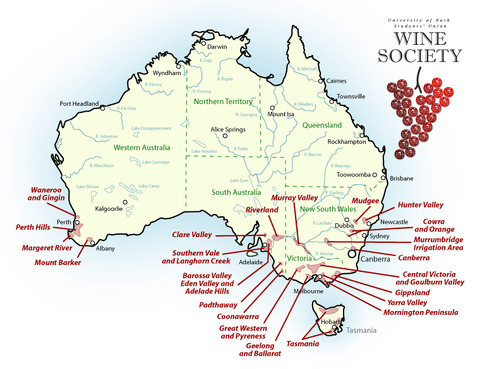
Australia’s Wine Regions
To understand Australian wine, one must first know how the 2156 wineries and 6000 grape growers are organized and how they label their wines.
Australia has a sophisticated yet straightforward appellation system. You’ll find distinct Geographical Indications (GI) under the umbrella term Wine Australia all along the country’s southern shore.
Vineyards run along Queensland’s southern shore, New South Wales, Victoria, South Australia and Western Australia — grapes grow merrily in Tasmania as well! There are around 65 GIs in Australia, and they all focus on different wine styles depending on their climates, soil types and proximity to the sea.
To find the right Australian wine for you, let’s explore the most famous wine grapes where they are grown. Here’s a quick tour through Australia’s verdant vineyards. Our first stop? Australian white wine.
Australian White Wine
Chardonnay
Chardonnay is Australia’s most planted white varietal and the third most important after the red Cabernet Sauvignon and Shiraz. Chardonnay is a noble grape. The queen of white grapes is native to Burgundy, France, but arrived in Australia in 1832. Winemakers love the grape for a reason — it thrives almost everywhere.
Of course, Chardonnay vines prefer colder climates, so you’ll find the finest Australian white wines made with the grape up on the hills or near the coast, where temperatures are lower.
Expect a tight acidic backbone and scents reminiscent of golden apples, white flowers, citrus peels and oaky vanilla over a medium-bodied and creamy palate. These wines are best enjoyed with pasta, creamy sauces, chicken thighs and savoury pastries.
Regions for Australian Chardonnay:
Margaret River, Adelaide Hills, Yarra Valley, Mornington Peninsula, Tasmania.
Wine to try:
Allandale Chardonnay 2021
Sauvignon Blanc
Sauvignon Blanc is the fifth most planted grape in Australia, and it’s often blended with Semillon, a style inspired by the white wines from Bordeaux. By the way, Semillon alone makes extraordinary wine in Australia as well, primarily in Hinter Valley.
Unlike Sauvignon’s European versions, these wines are brimming with tropical fruit redolent of passion fruit, lychee and kiwi, always with refreshing acidity. Enjoy Sauvignon Blanc with fresh cheese and seafood. For dry white wine, Australian white wine has you covered.
Regions for Australian Sauvignon Blanc:
Margaret River, Yarra Valley, Tasmania, Tumbarumba (Check the Sauv Blancs from neighbouring New Zealand as well!)
Wine to try:
Stella Bella Sauvignon Blanc 2021
Riesling
Riesling is the queen of cold-climate white grapes; it's easy to see why it thrives in Germany and Austria. Well, Australian grape growers have found great spots for growing the late-ripening and aromatic variety as well. The result is an elegant wine with floral and petrol aromas, often with hints of ripe peaches and mango. The sweetness in these wines may vary, so read the label carefully.
Riesling is particularly compatible with white meat, including pork and veal. It can be a great partner for spicy food like curries, too. Riesling is a wonderful summer sipper, and it’s easy to enjoy on its own as well.
Regions for Australian Riesling:
Clare Valley, Eden Valley, Tasmania, Western Australia.
Wine to try:
Pooley Butchers Hill Riesling 2021
Other Australian White Grapes
Many other white varietals show promising results in Australia, including Vermentino, Pinot Gris, Fiano, Muscat and others.
Australian Red Wine
Although Australian white wines are up there with the best in the world, the country is best known for its reds. Cabernet Sauvignon and Syrah are the two most planted grapes in Australia and make almost half of the vineyards. Both grapes arrived in the country in the 1830s at the hands of the “Father of Wine Australia”, James Busby. Today, producers make the most acclaimed wines in the country with one of these two grapes, but there are others. Let’s get to know them.
Shiraz
Shiraz, AKA Syrah, is a red grape from the Rhône Valley, France. The rustic grape produces big and bold red wines with ripe fruit aromas and hints of freshly cracked black pepper and chocolate.
Shiraz is also commonly blended with Grenache and Mataro (Mourvedre) in the now-famous GSM blend, where Grenache plays first fiddle. These wines are complex but approachable and offer a wide range of fruit, herb and spice aromas.
Australian Shiraz is best enjoyed with hearty stews, meat pies, grilled red meat, barbecue, roasts, goat and lamb.
Regions for Australian Shiraz:
Barossa Valley, Margaret River, Hunter Valley, Clare Valley, McLaren Vale.
Wine to try:
Turon Artist Range Syrah 2019
Cabernet Sauvignon
Cabernet Sauvignon is the most planted grape globally and the second most popular in Australia. There’s no doubt the noble Bordelaise varietal produces age-worthy and structured wines across the country. You can find wines made 100% with Cabernet Sauvignon everywhere and spectacular blends, most likely Cabernet-Merlot and Cabernet-Shiraz.
Cabernet Sauvignon wines are an excellent match for thick, fatty steaks, especially rib eyes and strip steaks. Cabernet will also shine with meaty stews, casseroles and semi-hard cheese.
Regions for Australian Cabernet Sauvignon:
Coonawarra, Barossa Valley, Margaret River, Victoria.
Wine to try:
Suckfizzle Cabernet Sauvignon 2018
Pinot Noir
Pinot Noir is not amongst the most planted red grapes in Australia, not because producers don’t want to grow it, but because the thin-skinned Burgundian grape is tough to grow and only thrives in the coldest climates.
Pinot Noir produces elegant, almost silky red wines with elevated acidity and fruit purity on the nose and palate. These sensual wines pair best with mushroom dishes, oily fish like salmon and tuna, and roasted poultry. Pinot Noir is also often used to make pretty rosé wine.
Regions for Australian Pinot Noir:
Mornington Peninsula, Yarra Valley, Tasmania, Adelaide Hills.
Wine to try:
Quartier Pinot Noir 2021
Other Australian Red Grapes
There are dozens of other red grapes in Australia, although not nearly as popular as those described above. Tempranillo is worthy of a special mention, and it’s doing great in Adelaide Hills, McLaren Vale, Heathcote and Margaret River.
Merlot, Barbera, Cabernet Franc, Petit Sirah (Durif) and many other grapes are worth seeking out, and they’re climbing the popularity ranks at an impressive pace.
There’s an Australian Wine For You
We’ve covered the most prominent red and white varietals in the Australian repertoire and where to find them. However, this is just a drop in the bucket — there’s much more from where these came from!
From world-class sparkling wine to lusciously sweet wine, Australian winemakers make wine for all occasions, food pairings and budgets. What’s the best Australian wine? That’s up to you. And you’ll have a great time finding the answer to that question.
Enjoy the wine Australia has for you and share it with friends and family. Australian wine is better than ever, and it’s not going anywhere. Are you ready to explore the vast country through your taste buds? All you need is a wine glass!
0 notes
Text
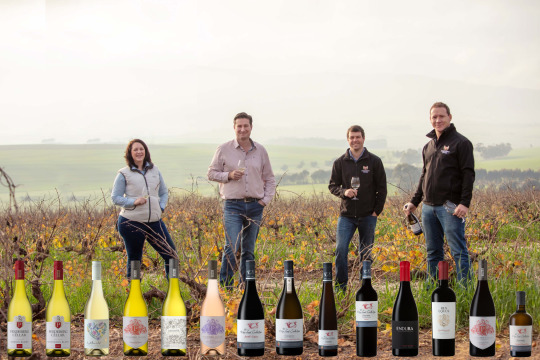
𝑰𝒕’𝒔 𝑨𝒏𝒐𝒕𝒉𝒆𝒓 𝑩𝑰𝑮 𝑾𝒊𝒏 𝑭𝒐𝒓 𝑻𝒉𝒆 𝑷𝒆𝒓𝒅𝒆𝒃𝒆𝒓𝒈 𝑻𝒆𝒂𝒎
On the heels of the recent achievements at the Global Chenin Blanc Masters competition, the 2023 SA Terroir Wine Awards, and the Tim Atkin rating, Perdeberg Cellar has done it again. This time at the 2023 Michelangelo International Wine & Spirits Awards. Not only as a Trophy Winner for 2021 The Dry Land Collection Fortitude Fortified Chenin Blanc, but also five Double Golds, six Golds, and two Silver medals.
Consistency and dedication are integral when it comes to crafting excellence in a bottle, which was proven to be the case with the 2021 The Dry Land Collection Fortitude Fortified Chenin Blanc being awarded the Michelangelo International Wine & Spirits Awards Dessert Wine Grand Prix Trophy winner.
Made from dryland cultivated grapes, namely vineyards that receive no irrigation, Fortitude showcases the uniqueness of the Chenin Blanc varietal grown in this terroir using age-old traditions. The grapes for the wines were sourced from old bush vines, planted in the best soils where they would be sustainable, with seasonal rainfall as the only water supply. Without irrigation, the crops weigh less, with smaller bunches and smaller berries that give intense fruit flavour. These grapes are picked by hand. A wine that appeals to enthusiasts who understand and appreciate natural winemaking processes and will enjoy sharing these expressions with others at elegant dinners and special occasions. Cellarmaster Albertus Louw describes this award-winning dessert wine as displaying a deep gold colour with aromas of dried apricots, ripe yellow fruit, and nuances of peach. On the palate flavours of litchi, candied citrus and undertones of honeycomb are prominent. Sip slowly on its own, chilled, or serve with desserts, cheese platters, or butternut soup. Enjoy now or leave to age further for the next five to eight years.
The Double Gold winners were the limited release of Perdeberg’s 80th anniversary namely, 2019 Rex Equus Pioneer's Blend, as well as 2019 The Dry Land Collection Longevity Natural Sweet Chenin Blanc, 2022 The Vineyard Collection Grenache Noir, and recently launched with new packaging, the classic 2023 Perdeberg Chenin Blanc and 2023 Perdeberg Sauvignon Blanc.
Gold medals were awarded to the iconic 2020 Endura Winemaker's Selection Cape Blend, 2022 The Dry Land Collection Courageous Barrel Fermented Chenin Blanc, 2020 The Dry Land Collection Joseph's Legacy, 2020 The Dry Land Collection Tenacious Shiraz, 2023 The Vineyard Collection Pinot Noir Chardonnay and 2022 Natuurlik Organic Chenin Blanc.
The 2023 Lighthearted Chenin Blanc and 2023 The Vineyard Collection Grenache Blanc were each awarded Silver.
For more information on these superb wines visit www.perdeberg.co.za.
*content supplied*
Pippa Pringle Perdeberg Wines
0 notes
Text
Vine Training Tips

Vineyards are a symbol of sophistication and a source of delightful wines that have enchanted palates for centuries. However, a successful vineyard doesn't come about by mere chance; it requires meticulous planning, hard work, and expertise in vine training techniques. Vine training is the practice of guiding grapevines to grow in specific ways to optimize sunlight exposure, manage grape yields, and ultimately produce high-quality fruit. In this article, we will delve into essential vine training tips to help vineyard owners achieve a bountiful harvest and produce exceptional wines.
What is Vine Training?
Vine training is an ancient practice that involves shaping grapevines to grow in a particular pattern, ensuring the vines receive adequate sunlight and air circulation while preventing overcrowding. By guiding the vines' growth, vineyard owners can improve grape quality, disease resistance, and overall vineyard productivity.
Benefits of Vine Training
Advantages of Vine Training
Vine training offers numerous benefits to both the vines and the vineyard owners. Some of the advantages include:
Enhanced sun exposure: Properly trained vines allow sunlight to reach all parts of the plant, promoting even ripening of the grapes.
Disease prevention: Good airflow reduces the risk of fungal diseases, which can thrive in damp and shaded vine canopies.
Controlled grape yields: Vine training helps manage grape production, leading to better fruit concentration and flavor intensity.
Efficient vineyard management: Well-trained vines are easier to prune, harvest, and maintain, optimizing labor efficiency.
Aesthetically pleasing vineyards: Thoughtfully trained vines create a visually appealing landscape, adding to the vineyard's allure.
Types of Vine Training Techniques
Popular Vine Training Methods
There are several vine training techniques practiced worldwide, each with its unique characteristics. Some common methods include:
Cane Pruning: This method involves selecting one or two canes to train along the trellis wires, with other canes removed.
Spur Pruning: In this approach, short spurs with two to three buds are retained and trained along the trellis.
Guyot System: A variation of cane pruning, where one cane is trained horizontally, and another is pruned back to a spur.
Scott Henry System: This system uses vertically divided canopies, maximizing sun exposure for each vine.
Head Training: The vine is allowed to grow with little intervention, often used for bush vine or free-standing vines.
Selecting the Right Vine Training Method
Choosing the Best Method
The selection of a vine training method depends on various factors, such as grapevine variety, climate, soil type, and desired wine style. It is crucial to consider these elements to ensure the chosen method aligns with the vineyard's specific requirements and goals.
Preparing for Vine Training
Steps for Preparing the Vineyard
Before commencing vine training, adequate preparation is essential. Follow these steps to set the stage for successful vine training:
Soil Analysis: Conduct a thorough soil analysis to understand its nutrient composition and pH level.
Choosing the Right Site: Select a suitable location with proper drainage, sunlight exposure, and air circulation.
Installing Trellis Systems: Install the trellis system that complements the chosen training method.
Vineyard Layout: Plan the vineyard layout, accounting for row spacing and vine orientation.
Pruning Existing Vines: If the vineyard has established vines, prepare them by pruning to the desired form.
Implementing Vine Training
Applying the Training Techniques
Once the preparation is complete, it's time to implement the vine training technique. The process may differ based on the chosen method, but the following general principles apply:
Gentle Handling: Handle the vines with care to avoid damage and shock during the training process.
Tying and Training: Use soft ties to secure the vines to the trellis wires, guiding them along the desired path.
Removal of Suckers: Remove unwanted shoots that may divert energy away from the main vine.
Positioning of Shoots: Position the shoots to achieve optimal sunlight exposure and airflow.
Caring for Trained Vines
Maintenance of Trained Vines
Maintaining trained vines is vital to their long-term health and productivity. Here are some essential care practices:
Regular Pruning: Prune the vines during the dormant season to remove excess growth and promote fruiting wood.
Irrigation Management: Provide sufficient water to the vines, especially during critical growth stages.
Fertilization: Apply appropriate fertilizers to ensure the vines receive essential nutrients.
Pest and Disease Control: Monitor the vineyard regularly and take necessary measures to prevent and manage pests and diseases.
Troubleshooting Common Issues
Dealing with Vine Training Challenges
Despite the best efforts, vine training may encounter challenges. Some common issues and their solutions include:
Uneven Growth: Adjust vine positioning and trellis wires to ensure even exposure to sunlight.
0 notes
Text
Grapes
Grapes
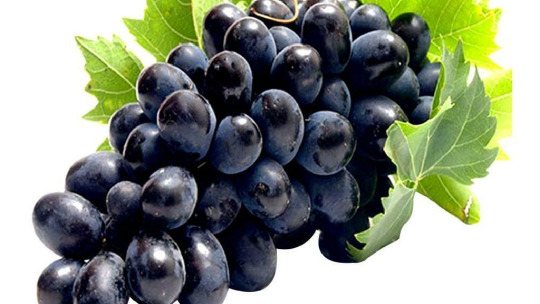
Grapes are a sweet fruit in the summer season. Grape plants are grows like a vine which are found in many colors such as purple, red and black. Grapefruit is typically in ellipsoid shape. Grape is the one of the deciduous and refreshing fruit.
Types
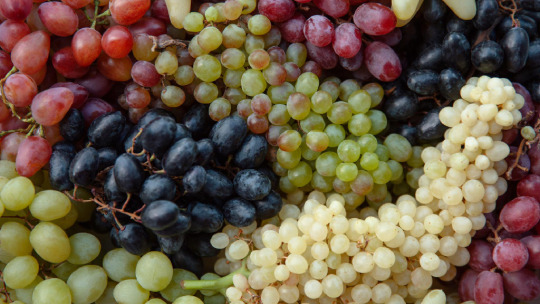
Grape has more than 10,000 different species some of them are listed below, there are moon drops grape, concord grape, cardinal grape, green grape, and blue grape.
Moon drops grape

Moon drops grapes are a seedless variety which is tubular in shape. Another name for this variety is sweet sapphire grapes. Grape fruit has dimples at the bottom. Well, mature grape fruits have a crisp texture and juicy flavour.
Concord grapes

Concord grapes can adapt to all ranges of soil and climatic conditions. This variety mainly grows for economic purposes. This fruit has a thick skin which is too shiny. Another name for this variety is fox grape.
Cardinal grape

This grapes plant is highly produced in California. It has a large fruit which bears black seed. The study of growing grape plant is called viticulture. Grape leaves alternate and palmately lobed. This fruit has a strawberry taste.
Green grapes

Green grapes prefer loamy and sandy soils. Fruit plants climb woody vines and they grow with the support of a trellis. It has greenish heart-shaped leaves. Green grapes produce fragrant flowers. Commonly known as white grape plant. This is a non-climacteric grape fruit plant and cross-pollinated crop.
Blue grapes

Blue grapes are too deciduous. Cluster-like appearance is good to see. Blue grapes mainly used for making juice, and wine preparation. After attaining better growth of the blue grapes plant, the vines will be fixed to the pole so that they can grow vertically.
Soil
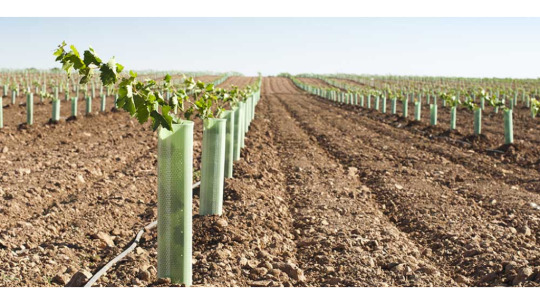
Grapes grow soil with a pH range of 6.5-7.5. Use coconut fibre cover over the soil, the coir helps maintain the moisture and also prevents the beetle from laying the egg. It performs best in deep medium textured soil.
Watering
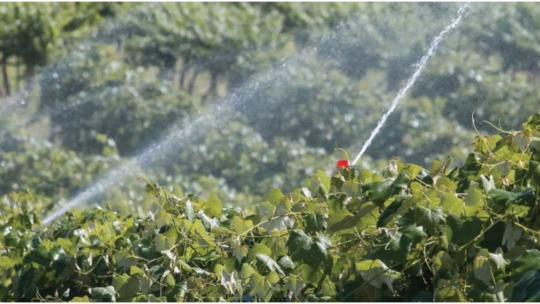
Grape are fruit tree that needs regular watering throughout their life cycle. During the hot season, a mature vine needs about 8 to 10 gallons of water per day. At the time of berry development, irrigated at weekly intervals.
Sunlight

Grapes require 7 hours of direct sunlight per day. It promotes high yield and has an economic purpose. Overexposure to the sun can lead to fruit burn. This fruit plant also requires good air circulation.
Fertilizer

Best to use mulch to maintain soil moisture. Application of banana peels, bone meal, wood ash, and well-decomposed manure can enhance the new vegetative growth.
Repotting
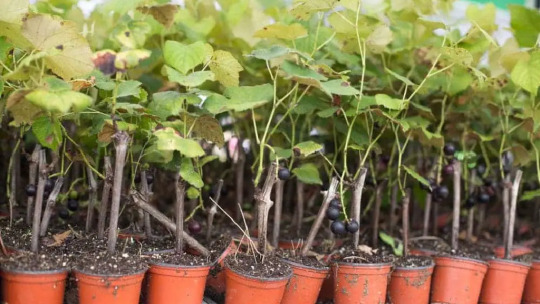
Early spring season is the best time to transplanting. Loosening the roots before planting enables the roots to spread out and grow in all directions.
Pruning
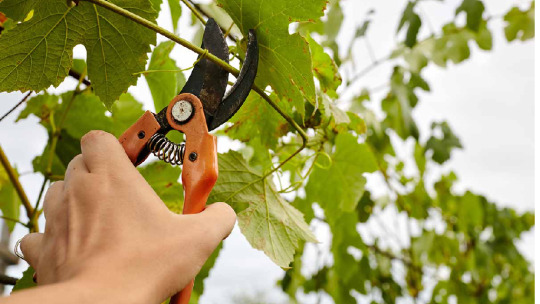
Plant vines will have their entire branches pruned and new branches will grow in the spring season. Prune the side branches and any off-shoots. Only allow one or two main stems for the first year. When the plant reaches pencil thickness, it is time to prune all the leaves and trick the plant into winter mode.
Benefits
Good source of vitamins and minerals. Grow on a creeper in large numbers.
Advertisement
It contains minerals and vitamins including vitamin A and vitamin C.
Grape fruit has low-fat calories and a well-balanced diet.
All parts of the grape plants used as medicine.
The identification of locally suited multipurpose varieties which can be used for table, wine and raisin production is desirable, as this would improve the economic stability of grape growers and hence industry viability.
Go green! Green goes with everything, you know
Grapes fruit plant
Blog created by: Santhionlineplants
0 notes
Text
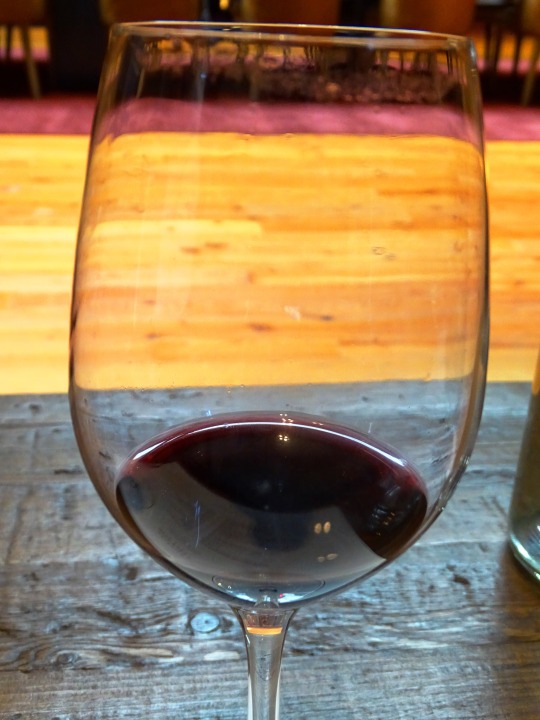

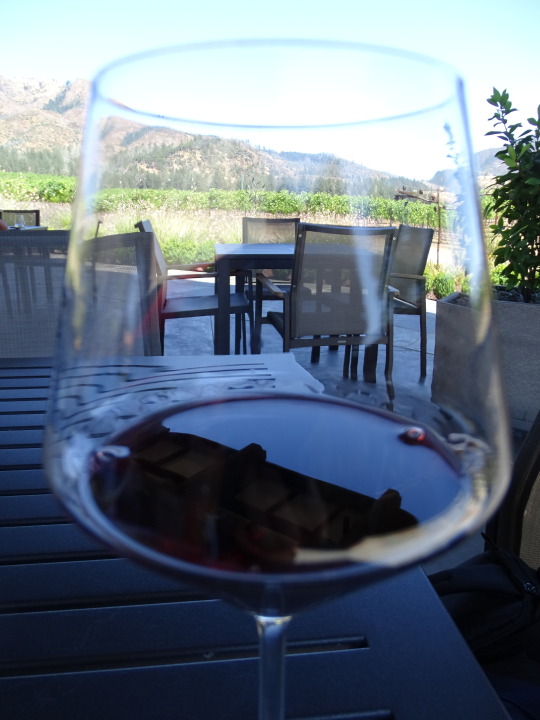
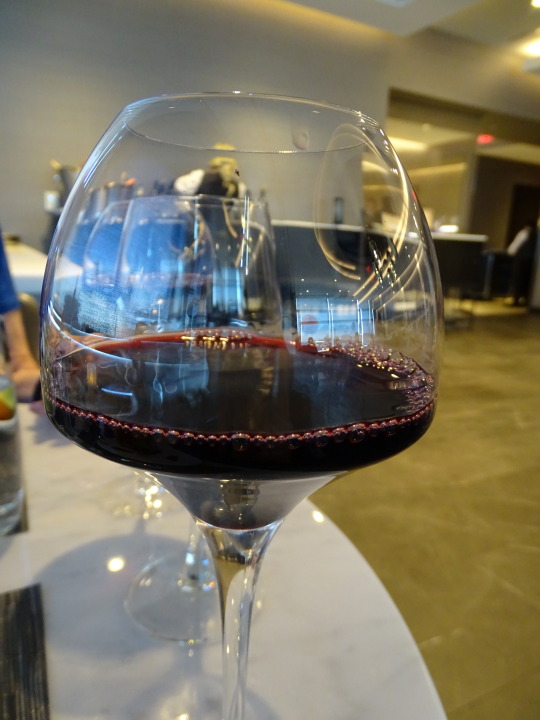
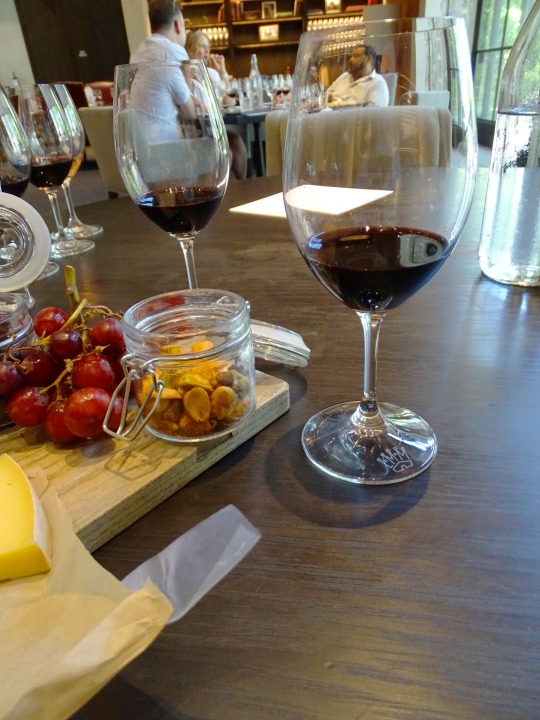
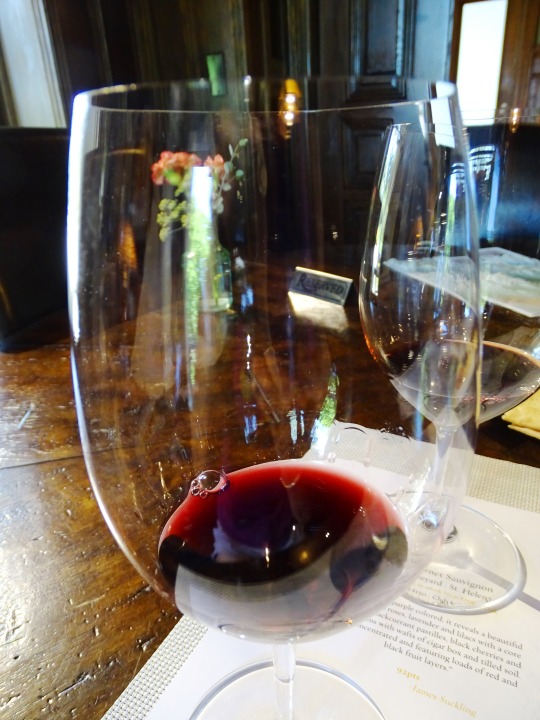
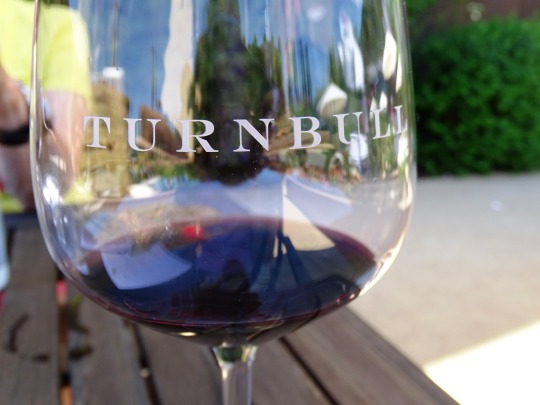
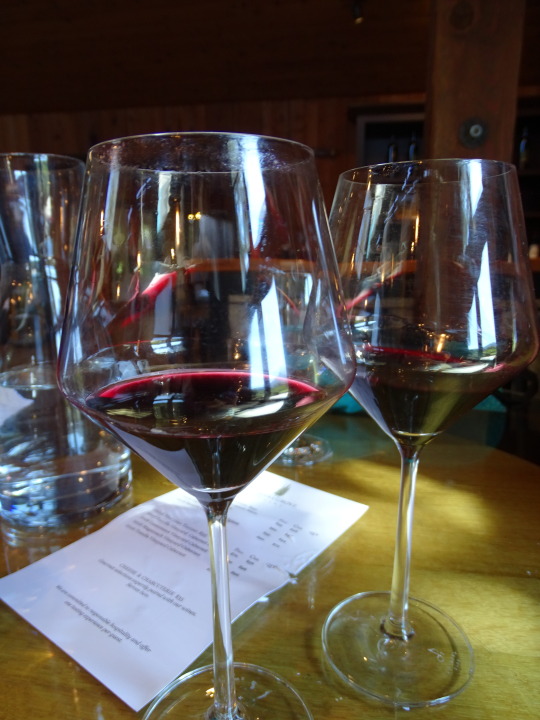

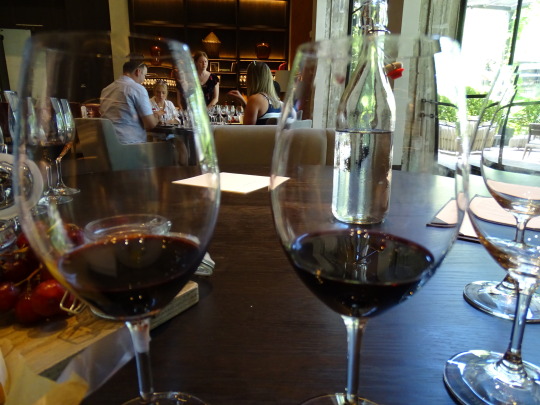
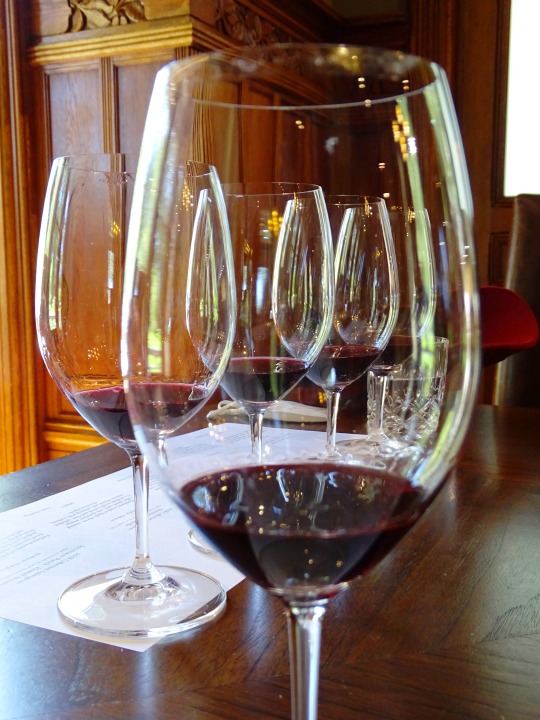
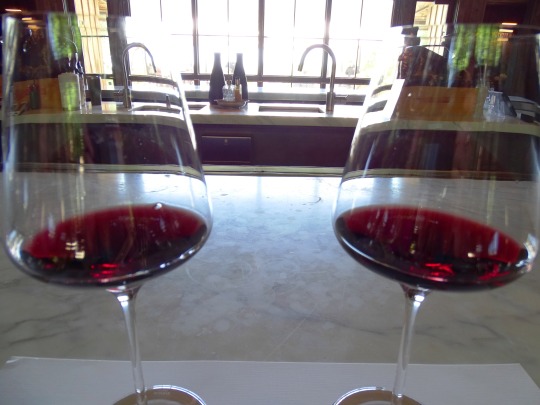
International Merlot Day
We know Merlot lovers doesn’t need a special reason to enjoy a glass of their favourite Merlot wine. But the 7th of November we are celebrating the International Day of this amazing grape, so no matter in which part of the world you are, it’s time to to raise your Merlot glass and join the celebration!
Do you know Merlot is the most planted grape in Bordeaux?
If you think about the most representative and most widely planted grape variety in Bordeaux, the majority of wine lovers would think about Cabernet Sauvignon. But that is not the case. There are far more hectares dedicated to Merlot than any other grape in Bordeaux. To give you an idea about the importance of this grape, more than 60% of all vines in Bordeaux are Merlot. In contrast, the more famous Cabernet Sauvignon occupies the second place with about 25% of all the vines. However, these grapes get along together very well. In fact, Cabernet Sauvignon and Merlot are typically blended together, though the proportion of each depends on the geographical location of the winery in the Bordeaux region.
In Bordeaux, the Gironde estuary cuts through the centre of the region creating two banks: a left bank and a right bank. It is a winery’s location on either bank that determines the proportion of the grapes in the blend. And it is the right bank of Bordeaux the one that gives more protagonism to our beloved Merlot grape. In fact, right bank blends tend to be softer, less tannic and lower in alcohol and acidity levels.
Merlot in the World
Even if experts believe this grape offers its best expression in the soils of Bordeaux, Merlot is not all about that wine region. In fact, Merlot it’s not only the most widely planted grape in Bordeaux, but all over France! Moreover, Merlot is also broadly planted in many countries around the world such as Australia, Argentina, United States, Mexico, Italy, Chile, Switzerland and numerous other countries.
Reputation of Merlot
Although, Merlot surged in fame worldwide in the late 1980s, mostly in the New World. Unfortunately, its reputation plunged, ensuring a negative consumer response to one of the most memorable lines in the 1994 wine buddy movie Sideways, “no f*cking merlot”. However, Pomerol, the most emblematical Merlot area of Bordeaux, is home of top world-famous fine wines such as Château Petrus and its neighbour Vieux Château Certan.
Interesting facts about Merlot grape:
Did you know that the word ‘Merlot’ comes ‘young blackbird’ in French? It is believed that French winemakers either gave Merlot its name because of the beautiful blue-black colour of the Merlot grape or because the blackbird likes grapes.
Merlot wine is popular worldwide because of its capacity to please all palates.
Despite its lack of tannins, Merlot ages excellently.
Blended Merlot, when aged, usually softens the tannic boldness of grapes such as Cabernet Sauvignon, mellowing out the wine.
Because of its low acidity and high sugar content, Merlot is one of the best wine for being paired with food.
Some experts believe Merlot grape is cousin of both Carmenere and Cabernet Sauvignon.
In 1990s, the Chilean wine industry sold a large amount of wine made from Carmenere grape as Merlot.
Source
Miles Raymond: No, if anyone orders Merlot, I’m leaving. I am NOT drinking any fucking Merlot!
#Louis M. Martini Winery#the best Merlot#Sonoma Valley#Napa Valley#USA#Cabernet Sauvignon#Pinot Noir#wine tasting#don't drink and drive#travel#restaurant#Brix Restaurant & Gardens#Freemark Abbey Winery#St. Francis Winery & Vineyards#Turnbull Wine Cellars#International Merlot Day#7 November#InternationalMerlotDay#California#original photography#summer 2022#Sequoia Grove Winery#Beringer Vineyards#Malbec#Ram's Gate Winery
0 notes
Text
Grapes
Grapes
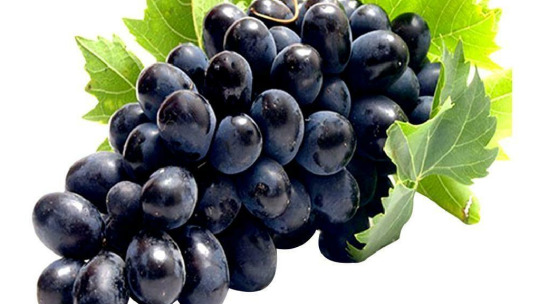
Grapes are a sweet fruit in the summer season. Grape plants are grows like a vine which are found in many colors such as purple, red and black. Grapefruit is typically in ellipsoid shape. Grape is the one of the deciduous and refreshing fruit.
Types

Grape has more than 10,000 different species some of them are listed below, there are moon drops grape, concord grape, cardinal grape, green grape, and blue grape.
Moon drops grape
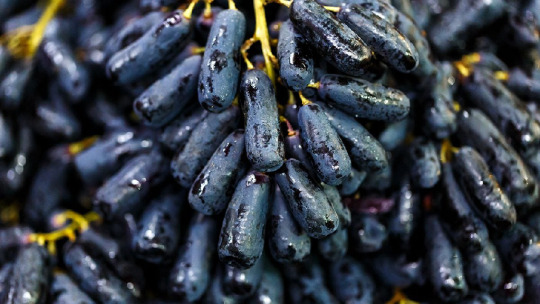
Moon drops grapes are a seedless variety which is tubular in shape. Another name for this variety is sweet sapphire grapes. Grape fruit has dimples at the bottom. Well, mature grape fruits have a crisp texture and juicy flavour.
Concord grapes

Concord grapes can adapt to all ranges of soil and climatic conditions. This variety mainly grows for economic purposes. This fruit has a thick skin which is too shiny. Another name for this variety is fox grape.
Cardinal grape
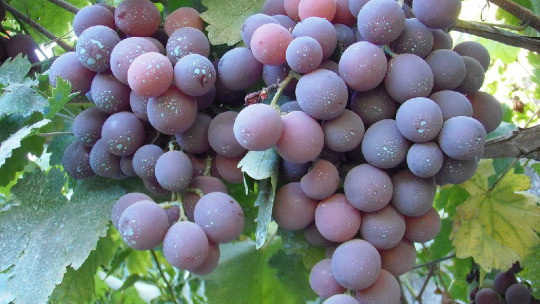
This grapes plant is highly produced in California. It has a large fruit which bears black seed. The study of growing grape plant is called viticulture. Grape leaves alternate and palmately lobed. This fruit has a strawberry taste.
Green grapes
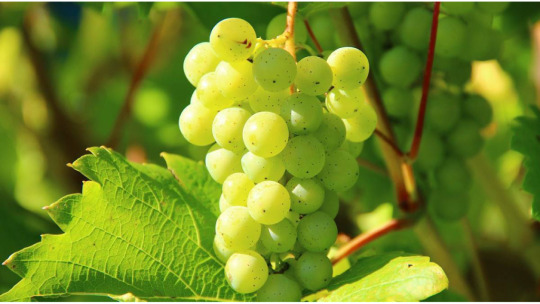
Green grapes prefer loamy and sandy soils. Fruit plants climb woody vines and they grow with the support of a trellis. It has greenish heart-shaped leaves. Green grapes produce fragrant flowers. Commonly known as white grape plant. This is a non-climacteric grape fruit plant and cross-pollinated crop.
Blue grapes
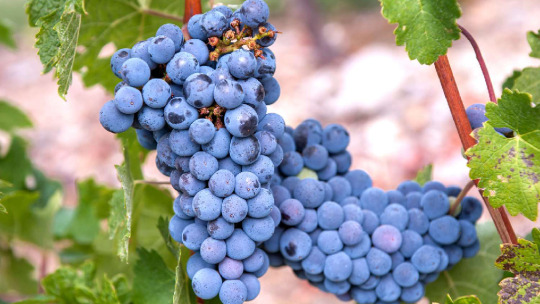
Blue grapes are too deciduous. Cluster-like appearance is good to see. Blue grapes mainly used for making juice, and wine preparation. After attaining better growth of the blue grapes plant, the vines will be fixed to the pole so that they can grow vertically.
Soil
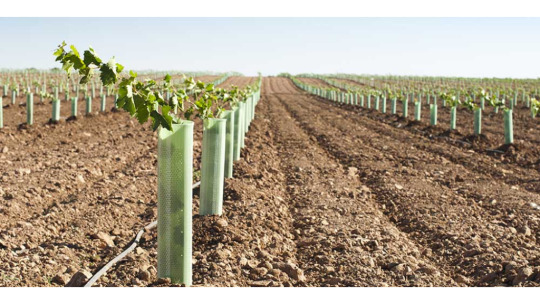
Grapes grow soil with a pH range of 6.5-7.5. Use coconut fibre cover over the soil, the coir helps maintain the moisture and also prevents the beetle from laying the egg. It performs best in deep medium textured soil.
Watering
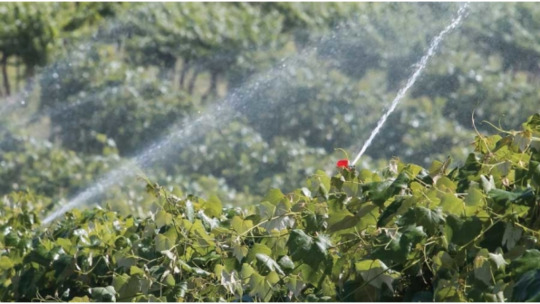
Grape are fruit tree that needs regular watering throughout their life cycle. During the hot season, a mature vine needs about 8 to 10 gallons of water per day. At the time of berry development, irrigated at weekly intervals.
Sunlight
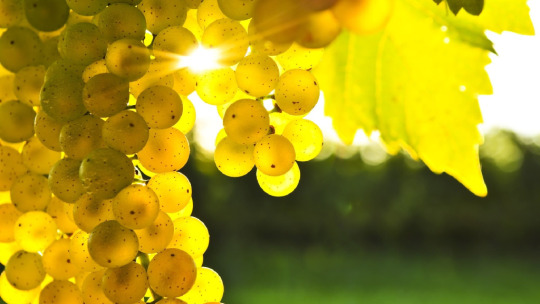
Grapes require 7 hours of direct sunlight per day. It promotes high yield and has an economic purpose. Overexposure to the sun can lead to fruit burn. This fruit plant also requires good air circulation.
Fertilizer

Best to use mulch to maintain soil moisture. Application of banana peels, bone meal, wood ash, and well-decomposed manure can enhance the new vegetative growth.
Repotting
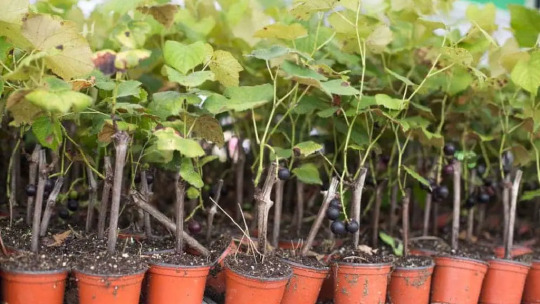
Early spring season is the best time to transplanting. Loosening the roots before planting enables the roots to spread out and grow in all directions.
Pruning
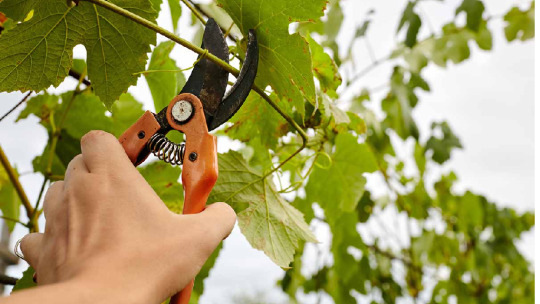
Plant vines will have their entire branches pruned and new branches will grow in the spring season. Prune the side branches and any off-shoots. Only allow one or two main stems for the first year. When the plant reaches pencil thickness, it is time to prune all the leaves and trick the plant into winter mode.
Benefits
Good source of vitamins and minerals. Grow on a creeper in large numbers.
Advertisement
It contains minerals and vitamins including vitamin A and vitamin C.
Grape fruit has low-fat calories and a well-balanced diet.
All parts of the grape plants used as medicine.
The identification of locally suited multipurpose varieties which can be used for table, wine and raisin production is desirable, as this would improve the economic stability of grape growers and hence industry viability.
Go green! Green goes with everything, you know
Grapes fruit plant
Blog created by: Santhionlineplants
0 notes
Text
Grapes
Grapes

Grapes are a sweet fruit in the summer season. Grape plants are grows like a vine which are found in many colors such as purple, red and black. Grapefruit is typically in ellipsoid shape. Grape is the one of the deciduous and refreshing fruit.
Types
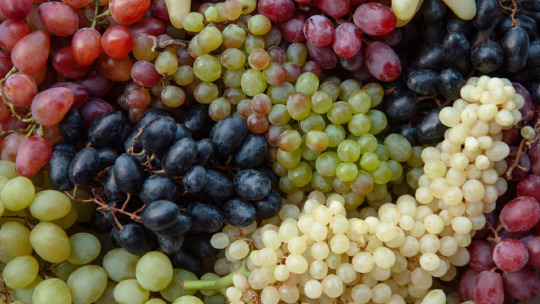
Grape has more than 10,000 different species some of them are listed below, there are moon drops grape, concord grape, cardinal grape, green grape, and blue grape.
Moon drops grape
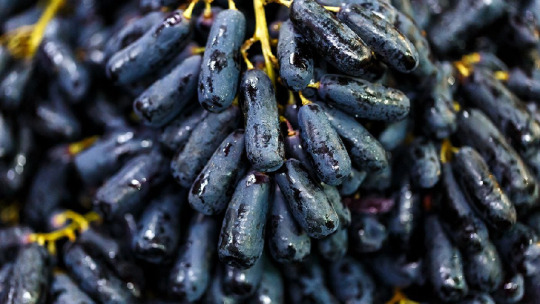
Moon drops grapes are a seedless variety which is tubular in shape. Another name for this variety is sweet sapphire grapes. Grape fruit has dimples at the bottom. Well, mature grape fruits have a crisp texture and juicy flavour.
Concord grapes
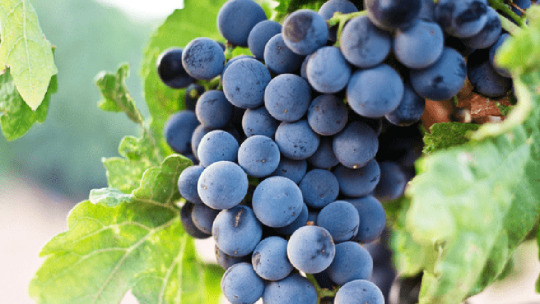
Concord grapes can adapt to all ranges of soil and climatic conditions. This variety mainly grows for economic purposes. This fruit has a thick skin which is too shiny. Another name for this variety is fox grape.
Cardinal grape
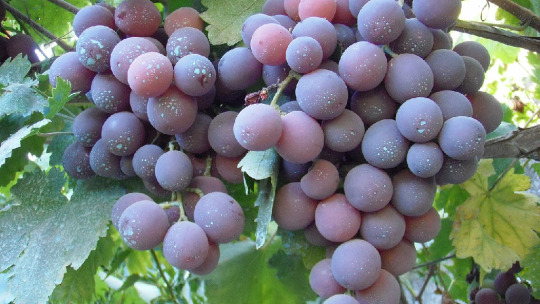
This grapes plant is highly produced in California. It has a large fruit which bears black seed. The study of growing grape plant is called viticulture. Grape leaves alternate and palmately lobed. This fruit has a strawberry taste.
Green grapes
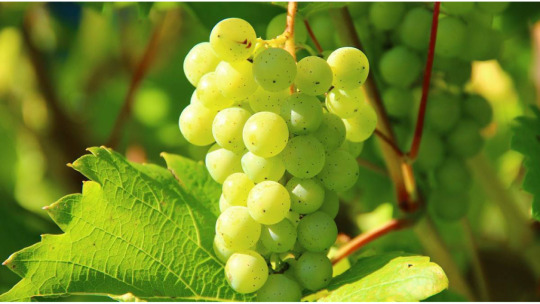
Green grapes prefer loamy and sandy soils. Fruit plants climb woody vines and they grow with the support of a trellis. It has greenish heart-shaped leaves. Green grapes produce fragrant flowers. Commonly known as white grape plant. This is a non-climacteric grape fruit plant and cross-pollinated crop.
Blue grapes
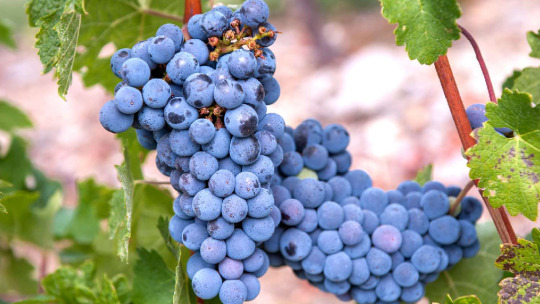
Blue grapes are too deciduous. Cluster-like appearance is good to see. Blue grapes mainly used for making juice, and wine preparation. After attaining better growth of the blue grapes plant, the vines will be fixed to the pole so that they can grow vertically.
Soil

Grapes grow soil with a pH range of 6.5-7.5. Use coconut fibre cover over the soil, the coir helps maintain the moisture and also prevents the beetle from laying the egg. It performs best in deep medium textured soil.
Watering

Grape are fruit tree that needs regular watering throughout their life cycle. During the hot season, a mature vine needs about 8 to 10 gallons of water per day. At the time of berry development, irrigated at weekly intervals.
Sunlight
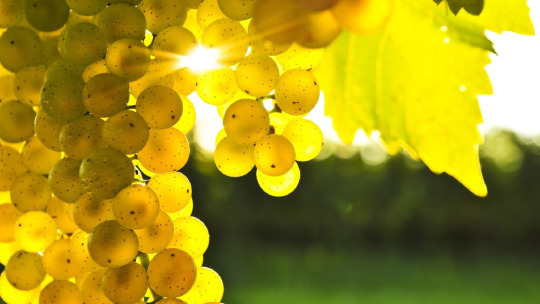
Grapes require 7 hours of direct sunlight per day. It promotes high yield and has an economic purpose. Overexposure to the sun can lead to fruit burn. This fruit plant also requires good air circulation.
Fertilizer

Best to use mulch to maintain soil moisture. Application of banana peels, bone meal, wood ash, and well-decomposed manure can enhance the new vegetative growth.
Benefits
Good source of vitamins and minerals. Grow on a creeper in large numbers.
It contains minerals and vitamins including vitamin A and vitamin C.
Grape fruit has low-fat calories and a well-balanced diet.
All parts of the grape plants used as medicine.
The identification of locally suited multipurpose varieties which can be used for table, wine and raisin production is desirable, as this would improve the economic stability of grape growers and hence industry viability.
Go green! Green goes with everything, you know
Grapes fruit plant
Blog created by: Santhionlineplants
0 notes
Text
Grapes
Grapes
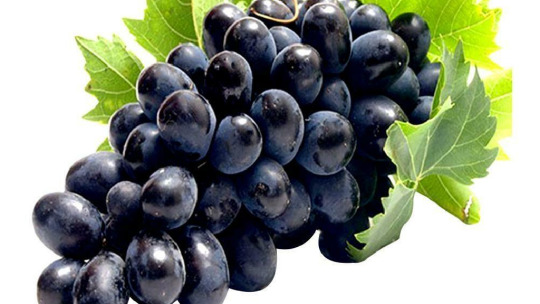
Grapes are a sweet fruit in the summer season. Grape plants are grows like a vine which are found in many colors such as purple, red and black. Grapefruit is typically in ellipsoid shape. Grape is the one of the deciduous and refreshing fruit.
Types
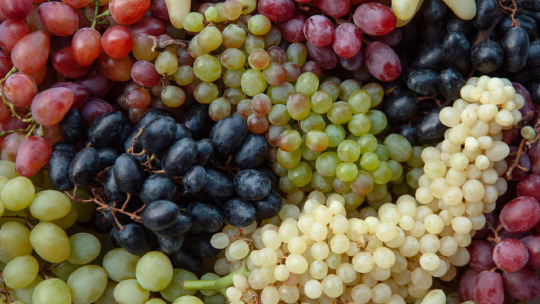
Grape has more than 10,000 different species some of them are listed below, there are moon drops grape, concord grape, cardinal grape, green grape, and blue grape.
Moon drops grape

Moon drops grapes are a seedless variety which is tubular in shape. Another name for this variety is sweet sapphire grapes. Grape fruit has dimples at the bottom. Well, mature grape fruits have a crisp texture and juicy flavour.
Concord grapes
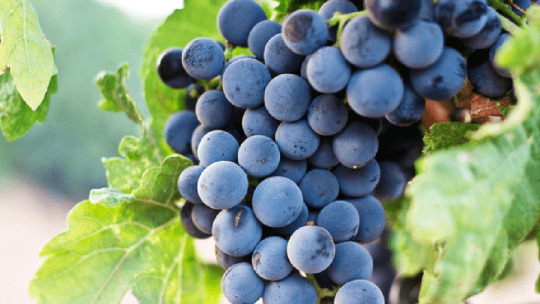
Concord grapes can adapt to all ranges of soil and climatic conditions. This variety mainly grows for economic purposes. This fruit has a thick skin which is too shiny. Another name for this variety is fox grape.
Cardinal grape

This grapes plant is highly produced in California. It has a large fruit which bears black seed. The study of growing grape plant is called viticulture. Grape leaves alternate and palmately lobed. This fruit has a strawberry taste.
Green grapes
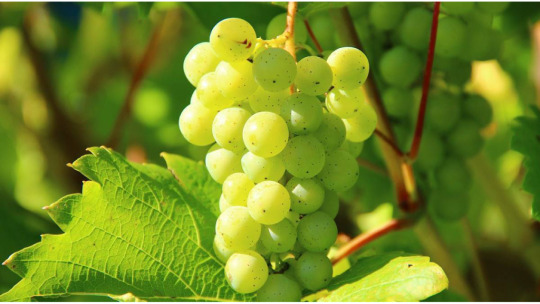
Green grapes prefer loamy and sandy soils. Fruit plants climb woody vines and they grow with the support of a trellis. It has greenish heart-shaped leaves. Green grapes produce fragrant flowers. Commonly known as white grape plant. This is a non-climacteric grape fruit plant and cross-pollinated crop.
Blue grapes
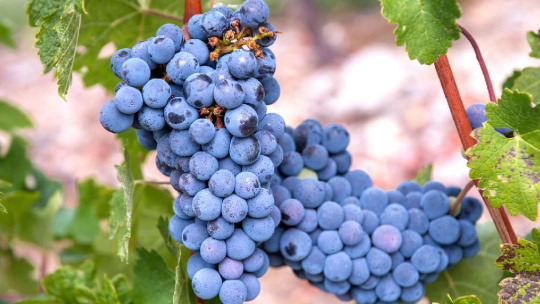
Blue grapes are too deciduous. Cluster-like appearance is good to see. Blue grapes mainly used for making juice, and wine preparation. After attaining better growth of the blue grapes plant, the vines will be fixed to the pole so that they can grow vertically.
Soil
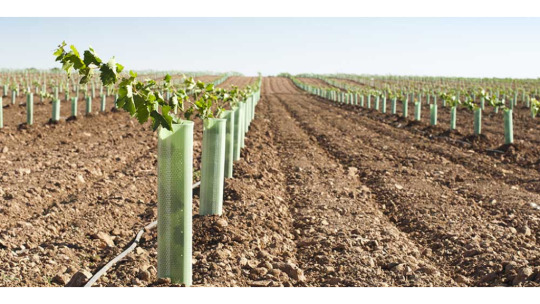
Grapes grow soil with a pH range of 6.5-7.5. Use coconut fibre cover over the soil, the coir helps maintain the moisture and also prevents the beetle from laying the egg. It performs best in deep medium textured soil.
Benefits
Good source of vitamins and minerals. Grow on a creeper in large numbers.
It contains minerals and vitamins including vitamin A and vitamin C.
Grape fruit has low-fat calories and a well-balanced diet.
All parts of the grape plants used as medicine.
The identification of locally suited multipurpose varieties which can be used for table, wine and raisin production is desirable, as this would improve the economic stability of grape growers and hence industry viability.
Go green! Green goes with everything, you know
Grapes fruit plant
0 notes